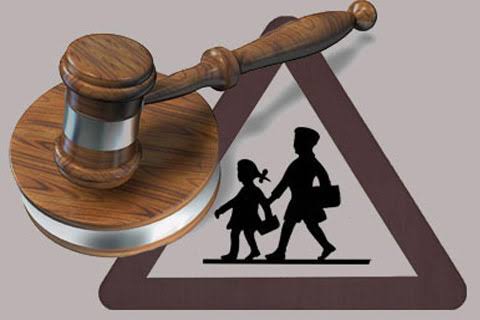WORKPLACE SAFETY AND INDUSTRIAL ACCIDENTS
Introduction
Workplace safety is an important problem for employees and employers alike. A safe work surroundings not handiest preserves the well-being of people however additionally ensures the effortless operation and productivity of an organization. unfortunately, business injuries can occur, ensuing in accidents, fatalities, and economic losses. this text explores the importance of place of job safety, commonplace reasons of business accidents, and preventive measures to mitigate these incidents.
The Importance of Workplace Safety
- Human Well-being: Ensuring workplace safety is a fundamental ethical responsibility of employers. It is essential to protect the physical and mental health of employees. Every worker should have the right to go to work and return home unharmed.
- Legal and Regulatory Compliance: Compliance with workplace safety regulations is mandatory in most countries. Failure to adhere to these regulations can result in fines, lawsuits, and a damaged reputation.
- Productivity and Efficiency: Safe workplaces tend to be more productive. When employees feel secure, they are more likely to focus on their tasks and contribute to the organization’s goals.
- Financial Implications: Industrial accidents can have severe financial consequences for businesses. The direct costs of accidents include medical expenses and worker’s compensation, while indirect costs encompass lost productivity and employee turnover.
Common Causes of Industrial Accidents
- Inadequate Training: Employees who are not adequately trained are more likely to make errors that can lead to accidents. Proper training is crucial for all workers, especially those operating heavy machinery or managing hazardous materials.
- Unsafe Work Environment: A cluttered, disorganized, or poorly maintained workplace can be a breeding ground for accidents. Slippery floors, blocked fire exits, or malfunctioning equipment pose serious risks.
- Lack of Protective Gear: Failing to provide and enforce the use of personal protective equipment (PPE), such as helmets, gloves, and safety goggles, leaves workers vulnerable to accidents.
- Fatigue: Overworked or fatigued employees are more prone to accidents. Long working hours and insufficient breaks can impair concentration and decision-making.
- Hazardous Materials: Industries that manage chemicals, explosives, or toxic substances must adhere to strict safety protocols. Improper storage or handling of these materials can result in catastrophic accidents.
Occupational safety and health (OSH) or occupational health and safety (OHS), also known simply as occupational health or occupational safety, it is a multidisciplinary field concerned with the safety, health, and welfare of people at work (i.e., in an occupation). These terms also refer to the goals of this field, so their use in the sense of this article was originally an abbreviation of occupational safety and health program/department etc. OSH is related to the fields of occupational medicine and occupational hygiene.
The goal of an occupational safety and health program is to foster a safe and healthy occupational environment. OSH also protects all the general public who may be affected by the occupational environment.
According to the official estimates of the United Nations, the WHO/ILO Joint Estimate of the Work-related Burden of Disease and Injury, almost two million people die each year attributable to exposure to occupational risk factors. Globally, more than 2.78 million people die annually because of workplace-related accidents or diseases, corresponding to one death every fifteen seconds. There are an additional 374 million non-fatal work-related injuries annually. It is estimated that the economic burden of occupational-related injury and death is four per cent of the global gross domestic product each year.[6] The human cost of this adversity is enormous.
In common-law, authorities, employers have the common law duty (also called duty of care) to take reasonable care of the safety of their employees. Statute law may, in addition, impose other general duties, introduce specific duties, and create government bodies with powers to regulate occupational safety issues: details of this vary from jurisdiction to jurisdiction.
Rights and duties of employees and employers
Duties of employers: Duties include: (i) providing a workplace that is free from hazards that may cause injury or diseases, (ii) providing free annual health examinations to employees in notified establishments, (iii) issuing appointment letters to employees, and (iv) informing relevant authorities in case an accident at the workplace leads to death or serious bodily injury of an employee. Additional duties are prescribed for employers in factories, mines, docks, plantations, and building and construction work, including provision of a risk-free work environment, and instructing employees on safety protocols.
Duties of consultants: manufacturers, importers, designers, and suppliers must make sure that any article created or furnished with the aid of them to be used in an status quo is secure and offer information on its right managing. Further, architects, engineers and designers must ensure any structure designed by them to be safely executed and maintained.
Rights and duties of employees: duties include taking care of their very own health and safety, complying with protection and health requirements, and reporting hazardous work incidents to the Inspector. employees additionally have positive rights along with the right to acquire information on safety and health requirements from the employer.

Workplace safety is a fundamental aspect of a healthy and efficient work environment. Industrial accidents can have severe consequences, affecting not only the injured employees but also the organization’s financial health and reputation. By prioritizing safety through training, inspections, protective gear, and proper emergency preparedness, employers can significantly reduce the risk of accidents, thereby fostering a culture of well-being and productivity in their workplaces. It is a collective responsibility to ensure that everyone goes to work and returns home safely.
Author: Khushi Tikkiwal, a Student of Manipal University Jaipur



